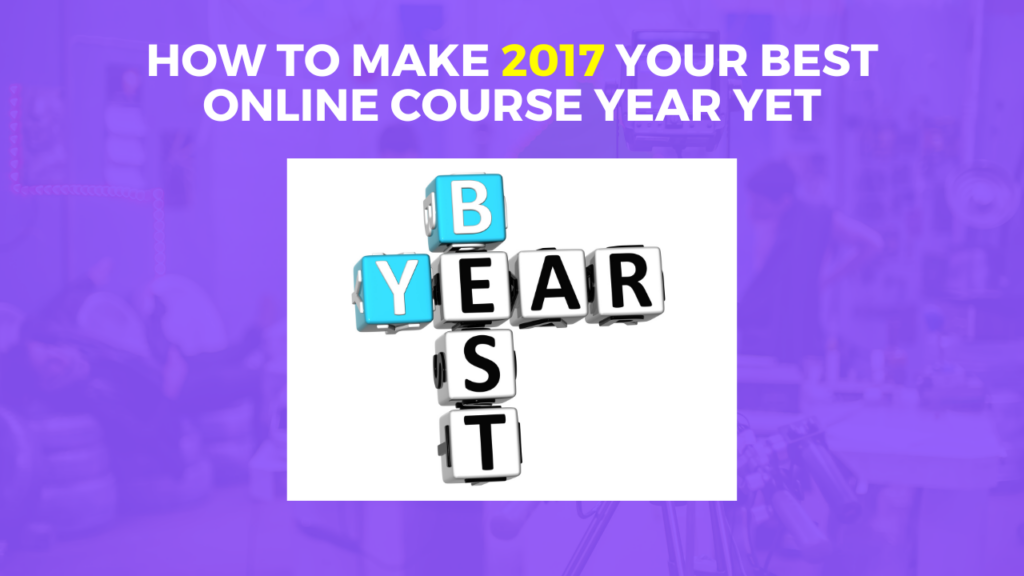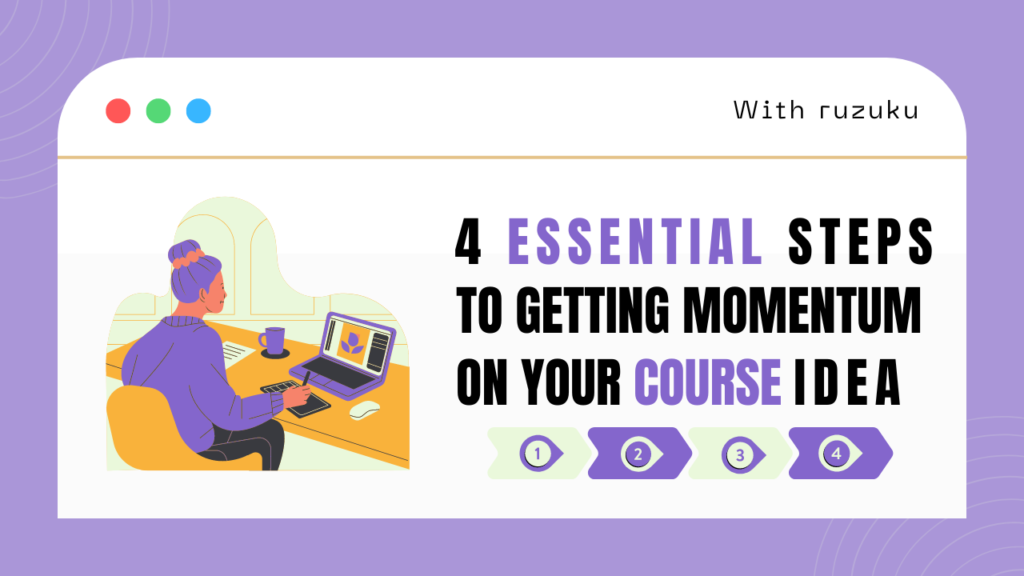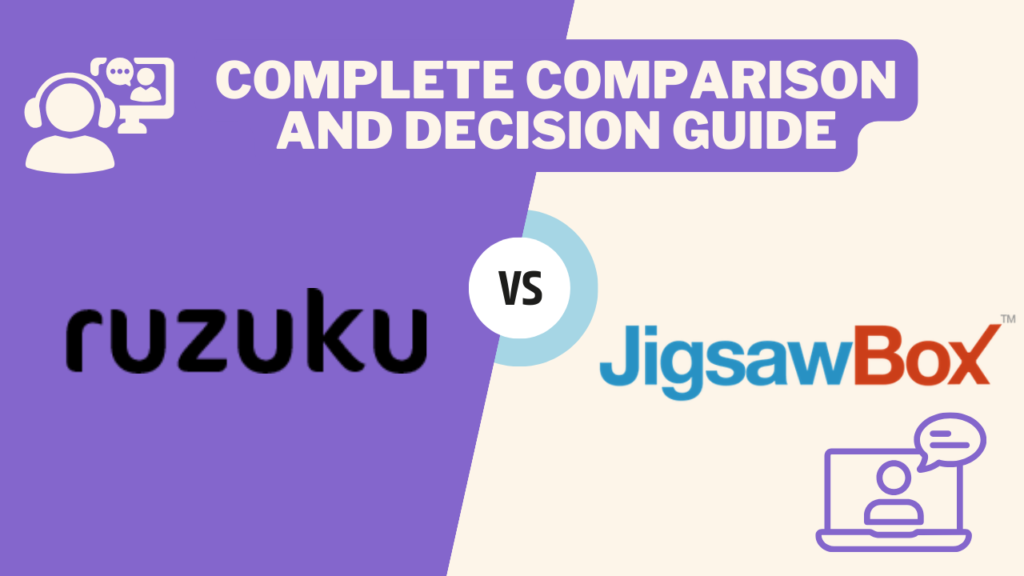Here we are, at the end of yet another year.
For better or worse, you made some progress on your online course. Or maybe you didn’t.
But whatever happened, you know that you can do better in 2017 — even great years have room for improvement.
So what does a course creator have to do to have their “best year yet?”
It all comes down to planning.
Divide and Conquer Your Year
A solid online course business plan starts with breaking your year down into manageable chunks of time. And while everyone is a little different in the way they approach their planning, this post will show you what works for us, as an education-centered business.
Here are the 4 levels of planning we use at Ruzuku:
1. Annual
Review everything in your business, including your courses and other offerings. Focus on priorities and identifying what’s most important for your business and your clients — as well as any bottlenecks to growth.
Ideally you’ll set aside a day or two for this (or maybe even longer if you’re working with a team). This big-picture focus should then guide the creation of your calendar and sequence of offerings for the year — what we call your OfferMap.
2. Quarterly
Conduct a Quarterly Personal Offsite (QPO). This should be at least a half day – ideally a full day – to step away from your daily demands and take time to reflect.
You evaluate what you’ve been doing over the past 90 days, where you’ve made progress, and what you want to change or improve. You go back to your vision and priorities from your annual review, and see where you’ve drifted off track.
By the end of your QPO, you should generate some fresh energy for the upcoming quarter.
3. Weekly
In our experience, this is one of the most overlooked levels. A 1-to-2 hour operational review each week can pay huge dividends in the long run.
Start by simply reviewing all the active projects you’re working on, any upcoming commitments you have on your calendar, and all open issues you need to follow up on.
Done consistently, this is a key way to find peace of mind and know that no balls are being dropped — especially when you’re moving fast.
For example:
This is 100% critical when you’re in the middle of a course launch. Even the smallest missed detail could completely derail your launch, and by taking a short amount of time to make sure you’re not missing anything, you give yourself the gift of peace of mind.
4. Daily
In a fast-paced, highly connected world, it’s easy to fall into a reactive mode.
Emails pop in from clients and you respond. A potential partner wants to hop on a call. An interesting blog post shows up and you want to check it out.
Having a daily review process lets you pull back from these inputs and demands. It allows you to reset your attention on what’s most important for you and your business, so you can focus appropriately.
Now you understand the four levels of planning, and how they can help you stay on top of your courses and business.
But you may have noticed that there’s still a missing piece.
Let’s say you block out time for your weekly review. You move things around so there’s space for a Quarterly Personal Offsite. And so on.
But what are you actually reviewing during those times?
Let’s take a look at the 3 essential tools that you should customize to your situation and look at regularly.
Assemble Your Minimal Planning Toolkit
During your four levels of planning and review, you will want to focus on the following pieces of your toolkit.
Tool #1 — OfferMap
Recently, one of our customers shared this when asked how she plans out her courses for the year:
“I’ve always just flown by the seat of my pants, which sometimes works and sometimes doesn’t.”
We get it! We’ve had to “wing it” ourselves — plenty of times. It can even be fun.
 But, there’s huge value in a more systematic approach. Especially if courses are one of your main revenue streams.
But, there’s huge value in a more systematic approach. Especially if courses are one of your main revenue streams.
If you plan, sequence, and schedule your courses so they roll out in a way that makes sense to your customers – building from one offer to the next – you can serve more people and grow revenue with less stress.
Plus, the more time you have to prepare for each launch, the more effective it can be.
Your visual OfferMap helps you get past “seat of my pants” thinking.
If you’d like to have our help in developing your own OfferMap, customized to your specific situation and courses, you’ll enjoy our virtual planning workshop, which we’re holding soon.
Tool #2 — OKR’s
You’ve probably read plenty of books and blog posts on setting and achieving goals. Or maybe you’ve even taken an entire course on goal-setting!
 All in pursuit of that elusive clarity, focus, and performance.
All in pursuit of that elusive clarity, focus, and performance.
Unfortunately, a lot of common goal-setting techniques just don’t seem to work very well. “Goals” often wind up like New Year’s Resolutions — a big idea that is exciting for a day or two, and then gradually fades away.
There is a better way. It’s used in a lot of the biggest, most successful companies (like Intel and Google) to keep teams aligned, but you don’t need a manager or a corporate structure to make the tool work for you.
The tool is called “Objectives and Key Results” (OKR’s for short).
Your OKRs include:
- A high level objective — “Create high-level group coaching program to extend support for my current students.”
- A detailed description of why that objective is important — “Help my students apply and implement the key techniques from Course X, and grow per-student revenue”
- A summary of how the objective aligns with your bigger vision — “My focus for 2017 is ensuring that my clients get great results from working with me”
- Three to five key results that will help you achieve that objective — “Conduct 10 phone interviews with current students by January 15, 2017”
To get value out of this framework, you should craft objectives that feel like a bit of a stretch and define key results that are visible and measurable, rather than vague or aspirational.
You’ll then regularly review your progress toward your results, and completely update your OKRs once every quarter.
Tool #3 — Business Dashboard
The third piece of your toolkit is a simple dashboard or overview of the key indicators in your business.
 You want to be able to see at a glance how your business is doing, especially in the key areas of finding new customers and serving your existing customers.
You want to be able to see at a glance how your business is doing, especially in the key areas of finding new customers and serving your existing customers.
For many education and coaching businesses, you should be looking at indicators such as:
- Traffic (visitors) to your website,
- New subscribers to your email list, and
- Signups and revenue for courses, programs, and other offerings
This might sound obvious. But are you doing it? Do you have these key numbers in a place where you can easily see progress? Do you review them consistently and regularly?
If not, this is one of the simplest and most valuable things you can do to improve your progress in 2017.
That’s it for planning for your best year yet in your online course business.
Simple, and also kind of complex.
You may be ready to go, and know exactly how you’re going to approach your planning for next year.
But if you’re still struggling with putting all the pieces together, we’ve got your back.
Join Us for Planning Day
On Thursday, January 5th, we’re going to host a half-day event that will help you lay a solid foundation for your business and courses in 2017.
During this event, you’ll put together:
- A Guided Reflection practice to identify key lessons learned, and opportunities for next year
- An “Intention Triangle” to clarify your focus for 2017
- Your 4 levels of planning, to help you learn how to stay on track throughout the year
- Specific, concrete OKRs (instead of vague goals)
- Your OfferMap of courses and other offering, organized to best serve your students and grow your business
You can sign up for the workshop here.
Let us know how your planning for 2017 is going. Is there anything you’re struggling with or could use some guidance on? Let us know in the comments!





